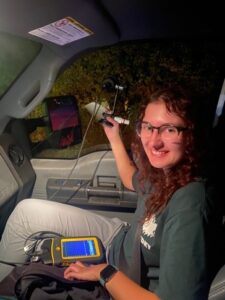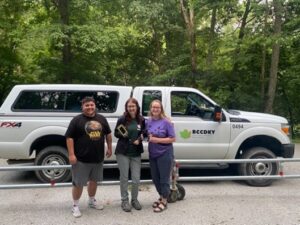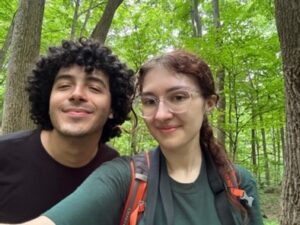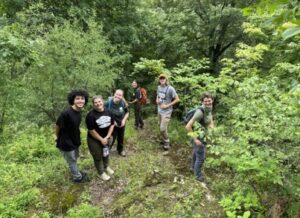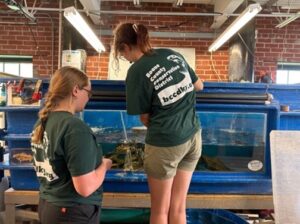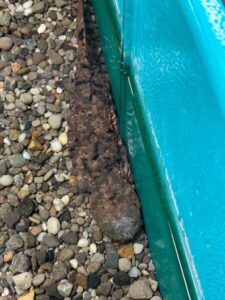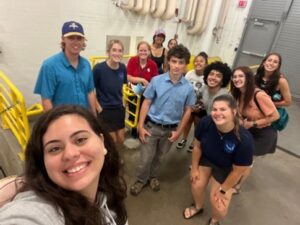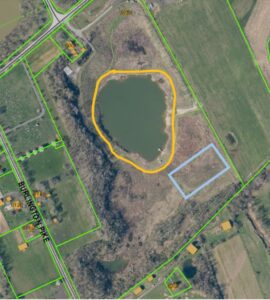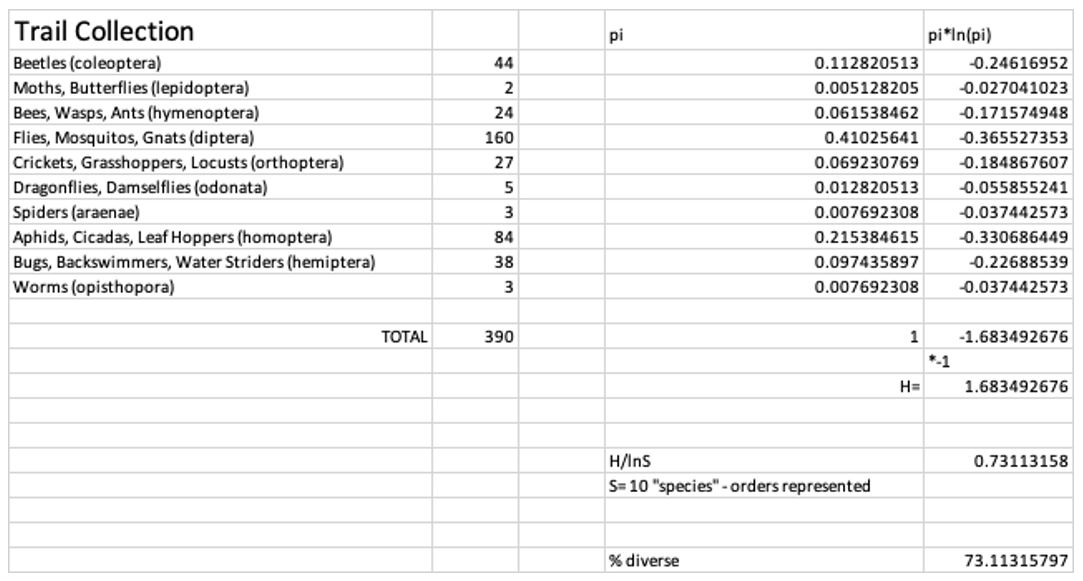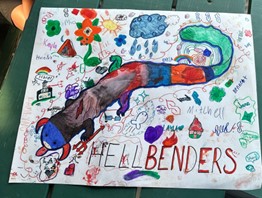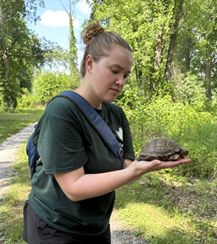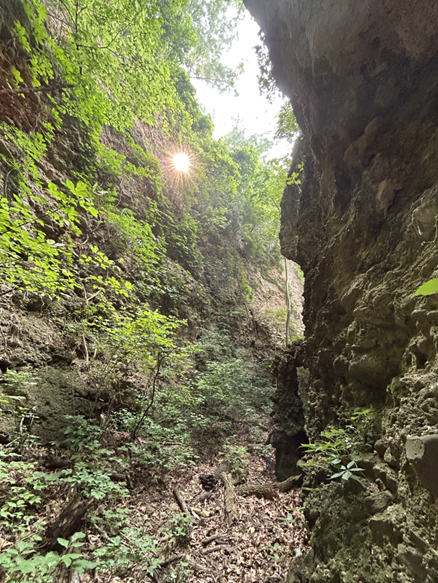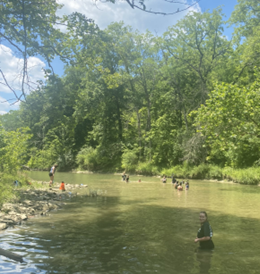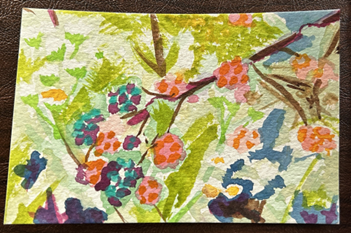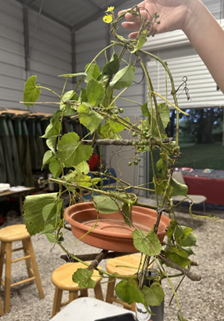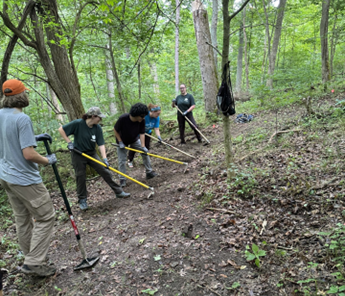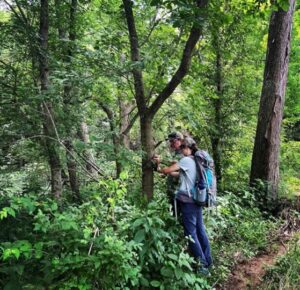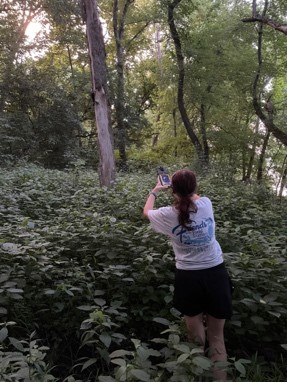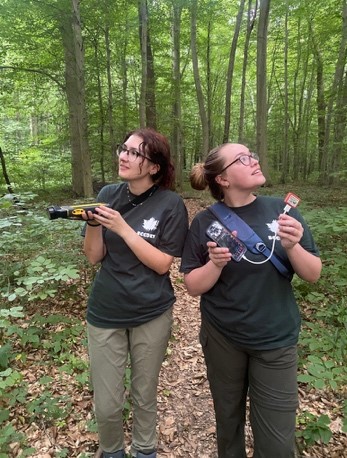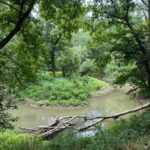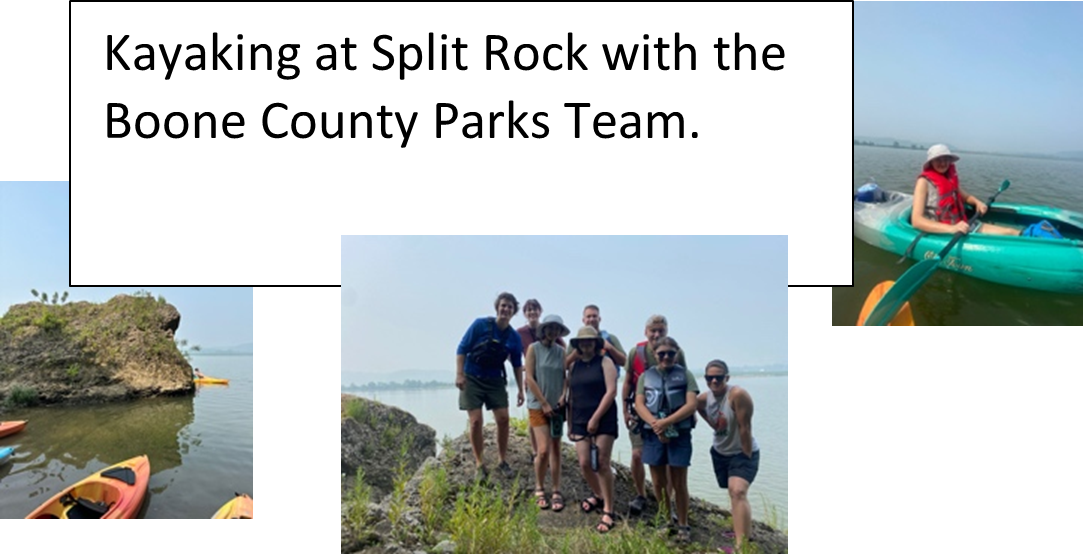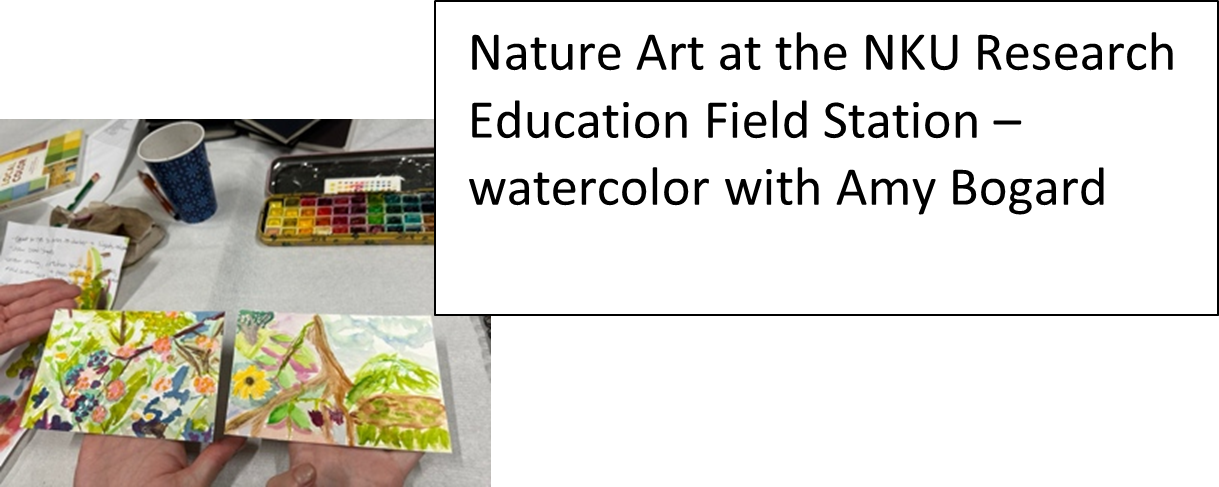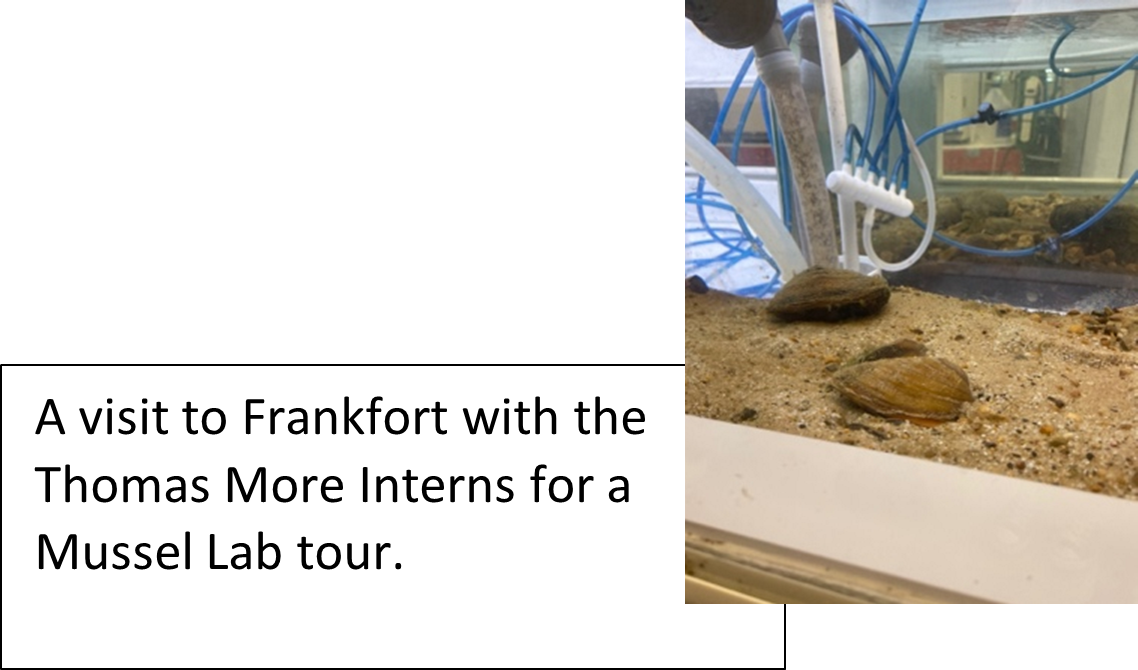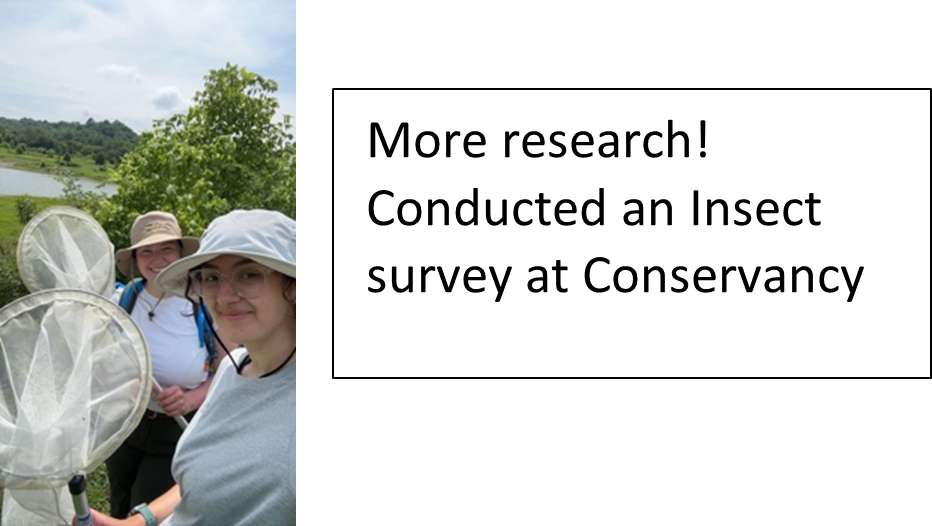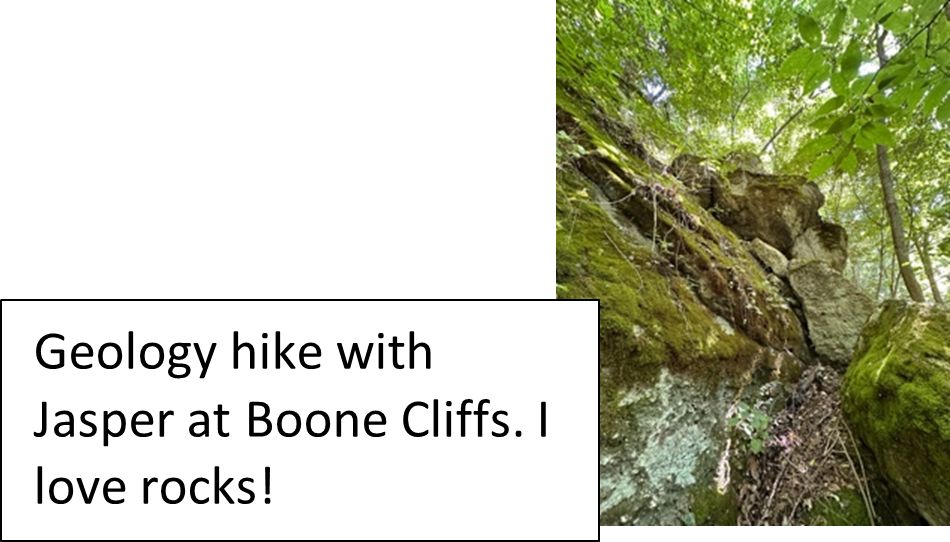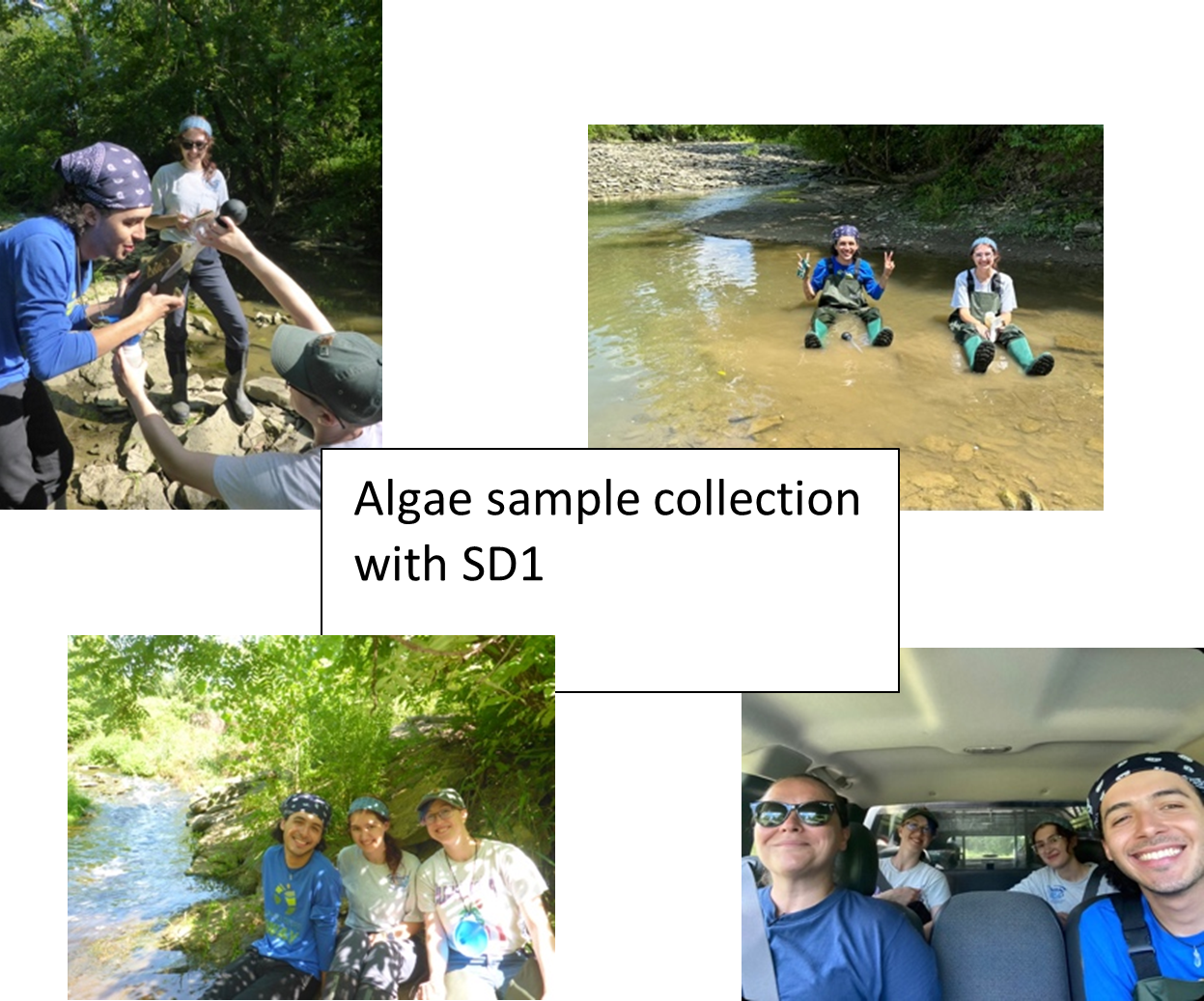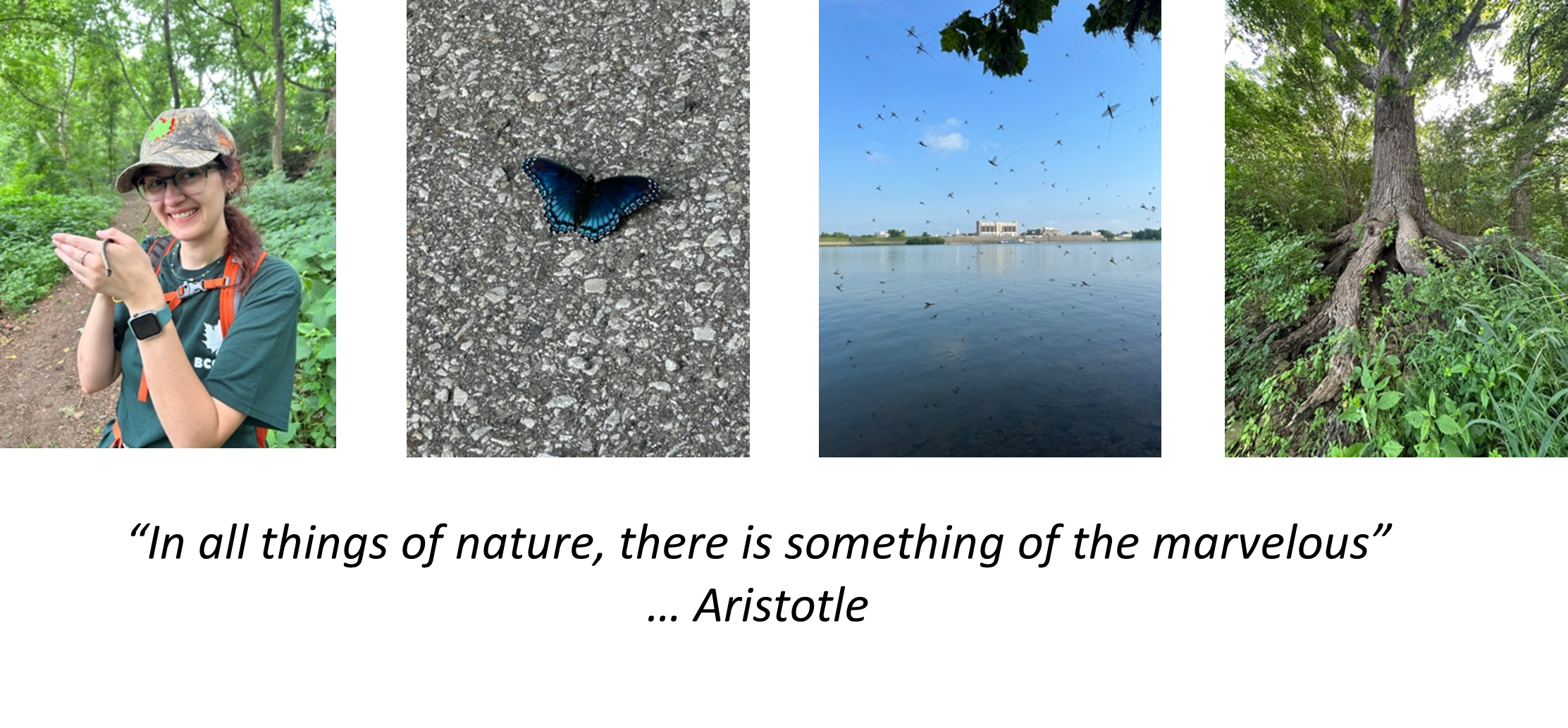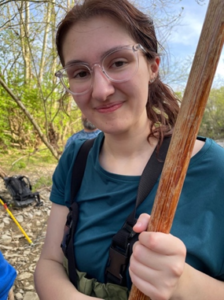I chose to continue interning with BCCDKY, because it’s an amazing way to gain experience, meet fantastic people, and learn new things.

Here’s what I’ve been up to:
Field Work:
- I went to Boone Cliffs with Sarah and Jasper for a scouting adventure. Jasper and I studied geological maps, and we were following our hypothesis to see if we could find sinkholes for my upcoming research project. Although we did not find any, we found something much cooler. We hiked our way up to the Cliffs of Boone Cliffs, and I crawled inside to see if maybe bats would roost there. I’m so glad Susan gave me a handy dandy headlamp! I’m sure everyone’s favorite part was when I screamed, “AHH! THERE’S AN ANIMAL IN HERE” I probably should mention, it was just a mouse and not a fox…
- Mark and Jasper took me on an insect expedition to Conservancy. We spent the morning catching, taking pictures, and using SEEK to ID. My favorite was the grasshopper that wouldn’t leave Jasper’s net and proceeded to munch on it.
- Jasper took me on a field trip to Big Bone Lick and gave me a mini lesson on anthropology with a geological twist.
- I helped Sarah and Natalie at Conservancy by removing invasive honeysuckle. Sarah taught me how to be a second at chain sawing, and Natalie taught me what a face cut looks like.
- We attempted a new technique with the setup of acoustic monitoring for bats. We set up a telescopic pole and attached a light for insects to gather around. The monitor was placed on top along with a trail cam.
- I attended a Vernal Pool Restoration Workshop at the Boone Environmental and Nature Center. Special guest Tom Biebighauser helped us build 4 vernal pools. Such a neat and fun experience!
Misc.
- We met with Sarah and Natalie from Parks to discuss our fall plans! I always love seeing them (I’m especially excited to learn the ways of chain sawing from them)
- I was able to shadow Dr. Booth’s aquatic bio class from UC and their class about fish sampling. We completed a quantitative habitat assessment, longline electro fished, backpack electro fished, and fish ID.
- I attended the OKI Dearborn County tour. The tour consisted of visiting Kaiser Pickle Plant, Scenic View Farm, Eight Top Grill Restaurant, Hall Farms, Lobenstein’s Farm.
Education
- I experienced my first monarch tagging program! We weren't able to catch any monarchs, but we did find a lot of other critters like a rat snake! After the program at Idlewild Park, we tagged a monarch at Conservancy while collecting equipment.















